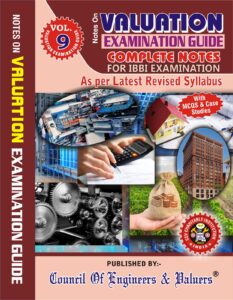Saturday Brain Storming Thought (203) 30/12/2023
BENEFIT-COST RATIO (BCR)
Benefit-Cost ratio (BCR) is an indicator, used in cost-benefit analysis, that attempts to summarise the overall value for money of a project or proposal
Key Takeaways of BRC
1) BCR is an indicator showing the relationship between the relative costs and benefits of a proposed project, expressed in monetary or qualitative terms
2) If a project has a BCR greater than 1, the project is expected to deliver a positive net present value to a firm and its investors
3) If a project’s BCR is less than 1, the projects costs outweigh the benefits, and it should not be considered
BCR calculation
The BCR is calculated by dividing the proposed total cash benefit of a project by the proposed total cash cost of the project
Decisions based on BCR
1) Deciding whether to hire new staff
2) Deciding whether to change company policies and procedures
3) Deciding whether to undertake a new project
4) Comparing different projects (to determine which provides a better outcome to the business)
5) Deciding how to invest company profit (out of a given set of options)
Advantages of BCR
1) Data driven
It’s superior to gut-feel decisions or back of the envelope calculations
2) Simplicity
It’s relatively simple to undertake
3) Adaptability
It can be adopted to awide variety of business cases
Disadvantages of BCR
1) Susceptible to human error
Some costs or benefits may be missed, monetary values may be assigned based on opinions or guess, personal biases or incentives may skew accuracy of data or weight given to certain figures
2) Relies on subjective value
Some costs or benefits will not havecan objective monetary value, introducing a subjective and uncertain element into the analysis
3) Becomes less accurate over time
The inherent uncertainty in costs or benefits like scale projections or cash flow forecasts mean that cost-benefit analyses are not suited to long-term projects
CBR Analysis
1) Frame the decision to be made
Format of the decision will be
a) comparing an undertaking to doing nothing
b) comparing various different undertaking (where the business is limited in pursuing all of them at once)
2) Identify costs and benefits
a) cost of new products, services or raw materials
b) Manufacturing costs
c) Labour costs
d) Inventory costs
e) Productivity changes (positive and negative)
f) Impact on Brand (positive and negative)
g) Impact on customer experience (positive and negative)
h) Impact on employee satisfaction/moral (positive and negative)
i) Recruitment, onboarding, training (for hiring staff)
j) Rent, utilities and other company overheads
k) Cost of risks such as project delays, environmental impact, regulatory risk
l) Opportunity cost
m) Revenue growth (from improved production or new product)
n) Competative advantage
3) Assign monetary value to costs and benefits
Need to consider these costs and benefits not just at a fixed point in time, but over the life of the project and beyond
4) Calculate BCR
BCR = (Total benefits) / (Total Costs)
Costs considered in BCR
1) Direct costs
2) Indirect costs
3) Intangible costs
4) Opportunity costs
5) Costs of potential risks
Benefits considered in BCR
1) Direct
2) Indirect
3) Total benefits
4) Net benefits
Common errors in BCR
1) Double counting
2) Counting sunk costs
3) Omitting costs
4) Unven application of cost categories
5) Productivity improvements alone
6) reduced data entry
COMPILED BY:-

Er. Avinash Kulkarni
9822011051
Chartered Engineer, Govt Regd Valuer, IBBI Regd Valuer












